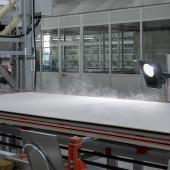U.S. new home starts showed double-digit growth in 2021
In 2021 the U.S. residential construction reached its highest level since 2006, with 1.6 million new hoouses, up 15.6% on 2020. The outlook is positive also for the year 2022.
After contracting for the first time in more than a decade in 2020, U.S. GDP rebounded strongly last year. The 5.7% increase in 2021 was the best year-over-year result percentage-wise since 1984. The U.S. healthy economy, as well as historically-low interest rates and falling unemployment (from 8% to 5.3% last year), supported the housing market, despite supply chain and labor issues.
In the residential market, new home starts rose for the twelfth consecutive year and were at their highest point since 2006. The 1.60 million units started in 2021 represented a 15.6% increase from the previous year.
According to U.S. Census Bureau, single-family new home starts, which comprised 70.4% of total home starts in 2021, increased 13.4% from the previous year to 1.12 million units. Multi-family starts rose 21.3% from 2020 to 472,100 units. The National Association of Home Builders (NAHB) forecasts 2022 new single-family and multifamily starts to increase 1.0% and 6.3%, respectively, and total starts to be up 2.5% to 1.63 million units.
Some of the main issues continuing to affect the housing market include building material prices, which are up 21% vs. a year ago, as well as labor costs and shortages, all of which negatively impact housing affordability. In fact, the National Association of Realtors confirms that the average new home sales price in 2021 was $390,000, up 15.9% from the previous year and an all-time high.
With record-high average new home prices and a low supply of available properties, new single-family home sales fell for the first time in a decade. The 762,000 units sold in 2021 represented a 7.3% decline from the previous year.
U.S. foreclosure filings, which are a critical inverse indicator of the housing market’s health, fell to their lowest level on record. The 151,000 foreclosure filings (0.11% of all U.S. housing units) in 2021 represented a 29.5% decline from the previous year and a 94.7% decline from the all-time high of 2.87 million filings in 2010.
The average 30-year fixed mortgage rate fell from 3.11% in 2020 to 2.96% last year, the lowest annual rate on record. However, rates in recent months have risen and in January 2022 reached 3.45%, the highest monthly rate in nearly two years.
Fueled by a 22.9% increase in residential construction, total U.S. construction spending (includes private and public residential and non-residential construction) last year reached an all-time high of $1.59 trillion, up 8.2% from 2020.
Read the complete article published in Ceramic World Review 145
Did you find this article useful?
Join the CWW community to receive the most important news from the global ceramic industry every two weeks

























